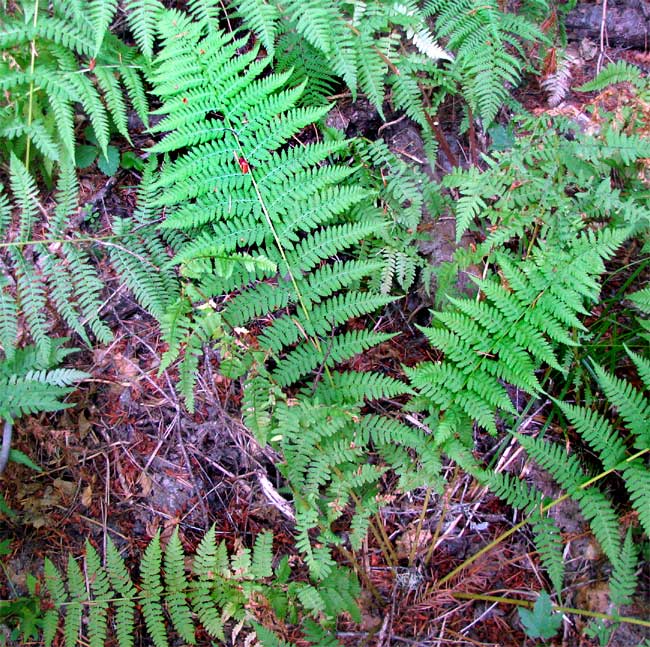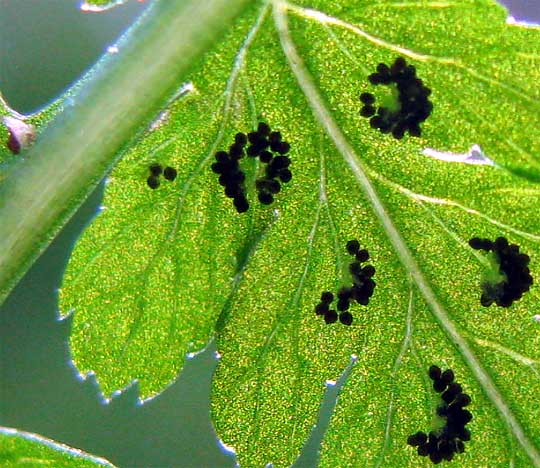Excerpts from Jim Conrad's
Naturalist Newsletter

from the August 16, 2009 Newsletter, reporting on a visit to Rogue River National Forest in southwestern Oregon:
NORTHWESTERN LADY FERNS
During my hike along the Rogue, when the trail dipped into a moist, shady little valley and a different fern species suddenly showed up, lots of knee-high, frilly ones, I was tickled. You can see one above.
I knew this one from back in Kentucky. It's the Lady Fern, ATHYRIUM FILIX-FEMINA*, one of the most common and best known ferns species throughout the temperate zones of both North America and Eurasia -- it's "circumboreal." Among its field marks are the way its lower divisions, or pinnae, are much smaller than at the frond's middle. Also, look at the frond underside below:

In that picture, one feature confirming that it's a Lady Fern is that the veins DON'T reach the pinna's margin. Another feature is the special shape of each cluster of tiny, black spheres. Each of those clusters is a fruit-dot or sorus. The tiny, black spheres making up the sori are stalked, baglike sporangia. When a sporangium matures it bursts and releases spores, which under perfect conditions germinate to form tiny, flat things called prothalli (singular prothallus), the first stage of a fern's life cycle.
The sori are "kidney-shaped," or "reniform." Earlier they'd been covered with cellophane-like indusia, and each indusium had been attached by one side, not in the center, umbrella-like, as with the swordferns. You might enjoy comparing the Lady Fern's sori with those of our abundant swordferns at https://www.backyardnature.net/n/09/090503sg.jpg.